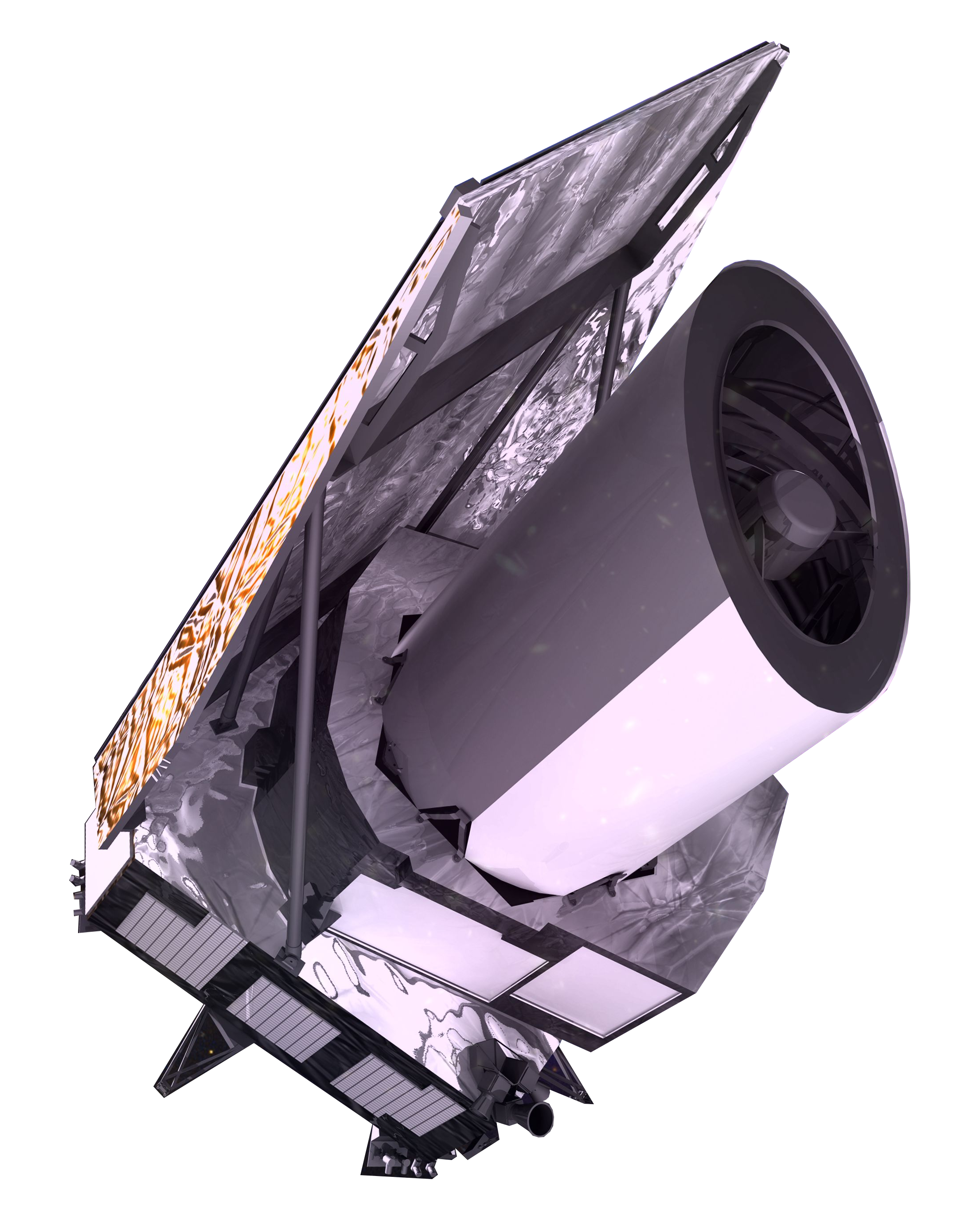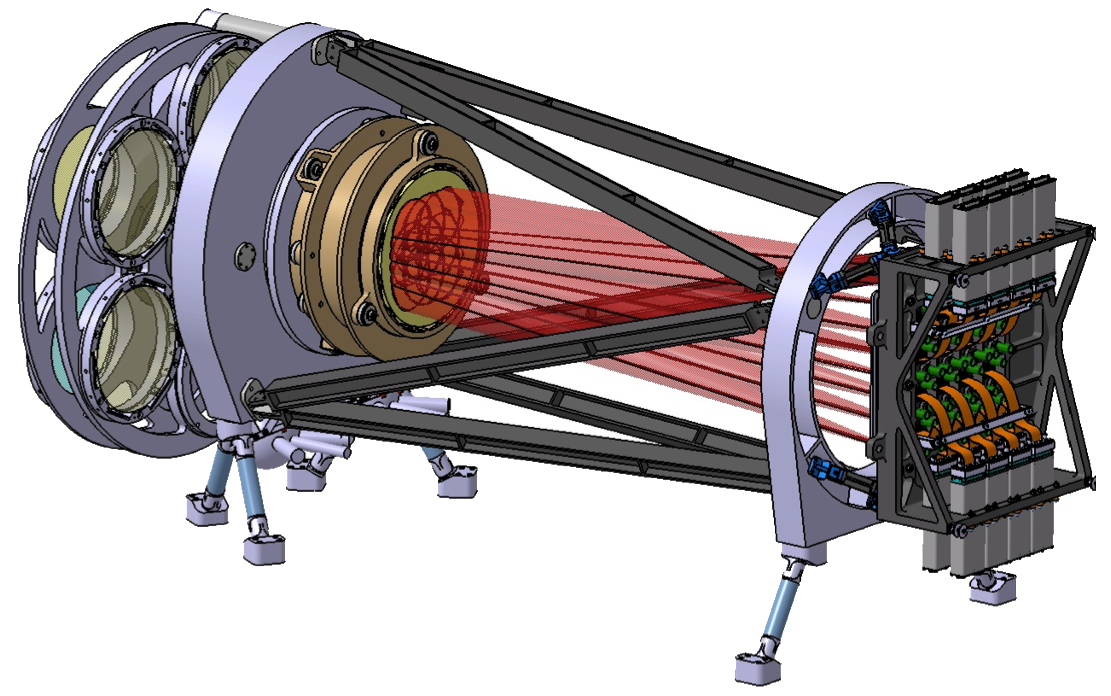


This image looks super neat.
Euclid is a space telescope of the European Space Agency (ESA) currently under development. Its objective is to answer the major questions of the cosmology of black energy and dark matter.
Euclid is a middle-class mission (M-class) of the Cosmic Vision program (2015-2025) of the European Space Agency. It was chosen in October 2011 and its launch is planned in 2019. Euclid will observe hundreds of millions of galaxies on a large portion of the sky.

Artist's view of the Euclid satellite
The CPPM participates in EUCLID at various levels of responsibility; The CPPM participates in science, management, instrument and ground segment activities as well. At the instrumental level, the group assumed responsibility for the flight sensor characterization tests for the NISP instrument. For several years now, CPPM has been developing, in collaboration with IPNL in Lyon, expertise on these detectors thanks to the support of the French Space Agency (CNES) and a research and development program on European pixel detectors. The CPPM in this framework has developed a characterization bench and has supported the tests of these detectors.

One of the two instruments embedded in the Euclid satellite: The Near Infrared Spectrophotometer
For EUCLID, the CPPM, based on this work, developed a program for characterization of H2RG pixel detectors. The CPPM is now in charge of receiving qualified space detectors, delivered by a US company, Teledyn, for testing and then integrating them into the focal plane of the EUCLID NIR instrument. This includes the installation of complete test benches dedicated to these measurements with the representative reading system (a read ASIC calls Sidecar) and a dedicated characterization program. The CPPM will therefore receive the 16 flight detectors by 2014 and will be integrated into the LAM Marseille Astrophysics Laboratory , with which the CPPM is working closely with, to be delivered with the instrument to ESA in 2018.
The CPPM is also involved in the implementation of the scientific ground segment, in charge of data processing, by being responsible for the definition and implementation of simulation codes. This is done in close collaboration with CNES, which organizes the ground segment at the project level and in relation to CCIN2P3, which is identified as the future French production center for EUCLID data.